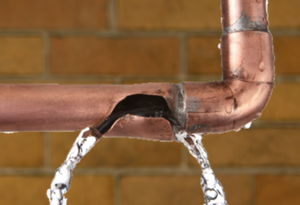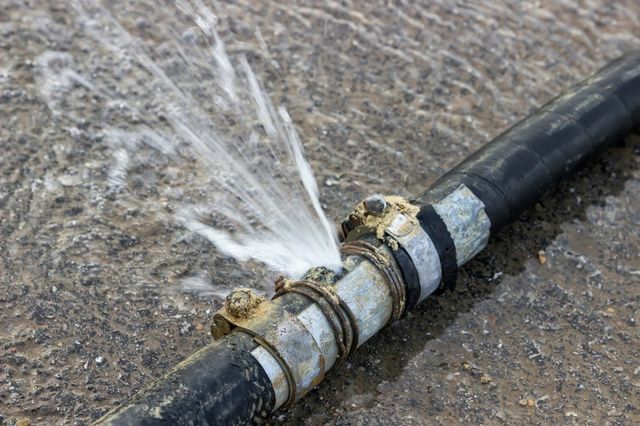Noticing and Efficiently Addressing a Leaking Pipe: How to Know
Noticing and Efficiently Addressing a Leaking Pipe: How to Know
Blog Article
In this article down the page you can get lots of awesome answers concerning What to Know Before Installing a Dishwasher.

A burst pipeline is a major emergency; you can just stand as you view water you pay very much to reunite with the earth. In even worse cases, you see a pool on your kitchen flooring, which is an excellent trip hazard, particularly if you have children around. If the pipe that ruptured was in your walls, problem: you may require to paint that entire area.
How can a catastrophe like a burst pipe be protected against and handled? Well, by paying attention to your professional emergency plumbing professionals and complying with these regulations.
How do I understand when my pipelines have burst?
Fluctuating water pressures
Pipelines do not simply burst in a day. You may have observed that your cooking area tap or shower doesn't run quickly when you turn the faucet. It may stop briefly for a couple of secs and then blast you with more pressure than common.
In various other instances, the water may seem typical in the beginning, then drop in stress after a couple of secs.
Wet walls as well as water spots
Prior to a pipeline ruptureds, it will certainly leakage, most times. If this consistent leaking goes undetected, the leakage may graduate into a broad tear in your pipeline. One very easy way to avoid this emergency is to look out for wet wall surfaces advertisement water stains. These water stains will lead you right to the leak.
Puddles under pipes as well as sinks
When a pipeline ruptureds, the discharge forms a puddle. It may appear that the puddle is growing in size, as well as regardless of the number of times you wipe the puddle, in a couple of minutes, there's one more one waiting to be cleaned up. Usually, you may not be able to trace the puddle to any type of visible pipes. This is a sign to call a specialist plumber.
Untraceable leaking noises
Pipeline ruptureds can take place in one of the most unpleasant locations, like within concrete, inside walls, or under sinks. When your house goes silent, you might have the ability to listen to an annoyingly persistent dripping sound. Even after you have actually examined your shower head and also cooking area tap, the dripping might continue.
Precious visitor, the dripping might be originating from a pipeline inside your walls. There isn't much you can do about that, except tell a professional plumber.
Shut off the Water
When water ices up, it increases in quantity by regarding 9 percent. And it increases with significant pressure: The stress inside pipelines might go from 40 pounds per square inch to 40,000 psi! No pipeline can hold that much stress, so it breaks open. The break might take place where the ice forms, yet more often, it occurs where water pressure locates a weak point in the pipeline. That might be inches and even feet from the icy area. Discover the water shutoff valve and shut off the water to avoid more damage. You could likewise need to shut down the electrical energy too, depending on where the leakages happens and just how huge it is.
Contaminated water
Many individuals presume a burst pipe is a one-way electrical outlet. Fairly the contrary. As water flows out of the hole or tear in your plumbing system, pollutants find their method.
Your water may be infected from the resource, so if you can, examine if your water tank has any issues. However, if your alcohol consumption water is supplied as well as cleansed by the city government, you must call your plumber quickly if you see or scent anything funny in your water.
What do I do when I spot a ruptured pipeline?
Your water meter will remain to run also while your water wastes. To minimize your losses, discover the major controls and turn the supply off. The water mains are an above-ground framework beside your building.
How to Fix & Detect a Leaking Pipe
How Do I Know if a Pipe is Leaking?
Leak detection tests can help you determine if your pipe has a leak. Even if you don’t see an apparent leak, you should still conduct leak detection tests regularly to save water and money—and prevent major damage to your home.
Water meter. It can be helpful to figure out what your usual water meter usage numbers are and then monitor them regularly. To monitor your meter, first, turn off all water faucets in your home. Check the meter and write down the numbers. In a few hours, check the meter again. If the numbers have changed, you have a leak. Water gauge. Use a water gauge to test your water pressure. Your showerhead should produce a certain amount of water pressure based on its model and design. If the pressure is lower than it is supposed to be for that specific showerhead, your home likely has a leak. Puddles. Look inside your bathroom, laundry, and kitchen sink cabinets. Puddles around the cabinets or around toilets, tubs, showers, and washing machines indicate the presence of a leaking pipe. You may also notice loose tiles, peeling or flaking paint, or mold caused by water accumulation. Napkin test. Even if you don’t see any puddles, you may still have a leak. You can test for water leaks in the bathroom, laundry, and kitchen by wiping below-sink connections with a napkin, paper towel, or piece of toilet paper. If it becomes damp, you probably have a leaking pipe under the sink. Discolored walls. Walls that are discolored—usually with brown or yellow stains—or bulging might mean that they have been impacted by water damage caused by a leaking pipe. Smell. A leaky pipe will create sitting water, and over time, that water may develop a musty smell. If your home smells musty, but you can’t locate the source, it may be due to a leak. Steps for Fixing a Leaking Pipe
A leaky drain can be remedied by tightening the pipe base, replacing the drain seal, caulking the rim, and tightening the pipe nut. Similarly, a leaking toilet pipe can be treated by tightening the packing nut. You may also need to replace the valve. A leaky faucet may just need tightening or replacement of the washers. If that doesn’t work, consider replacing your faucet. If your pipe has a hole in it, you may want to use a pipe leak sealer or pipe leak tape. This quick fix for water pipe leaks can also temporarily fix a copper pipe leak. https://www.ahs.com/home-matters/quick-tips/how-to-tell-if-pipes-are-leaking/

Hopefully you enjoyed our section about What to Know Before Installing a Dishwasher. Thanks for taking the time to browse our blog post. Enjoyed reading our post? Please share it. Let others find it. We take joy in reading our article about How to install a dishwasher safely.
Best choice? Dial. Report this page